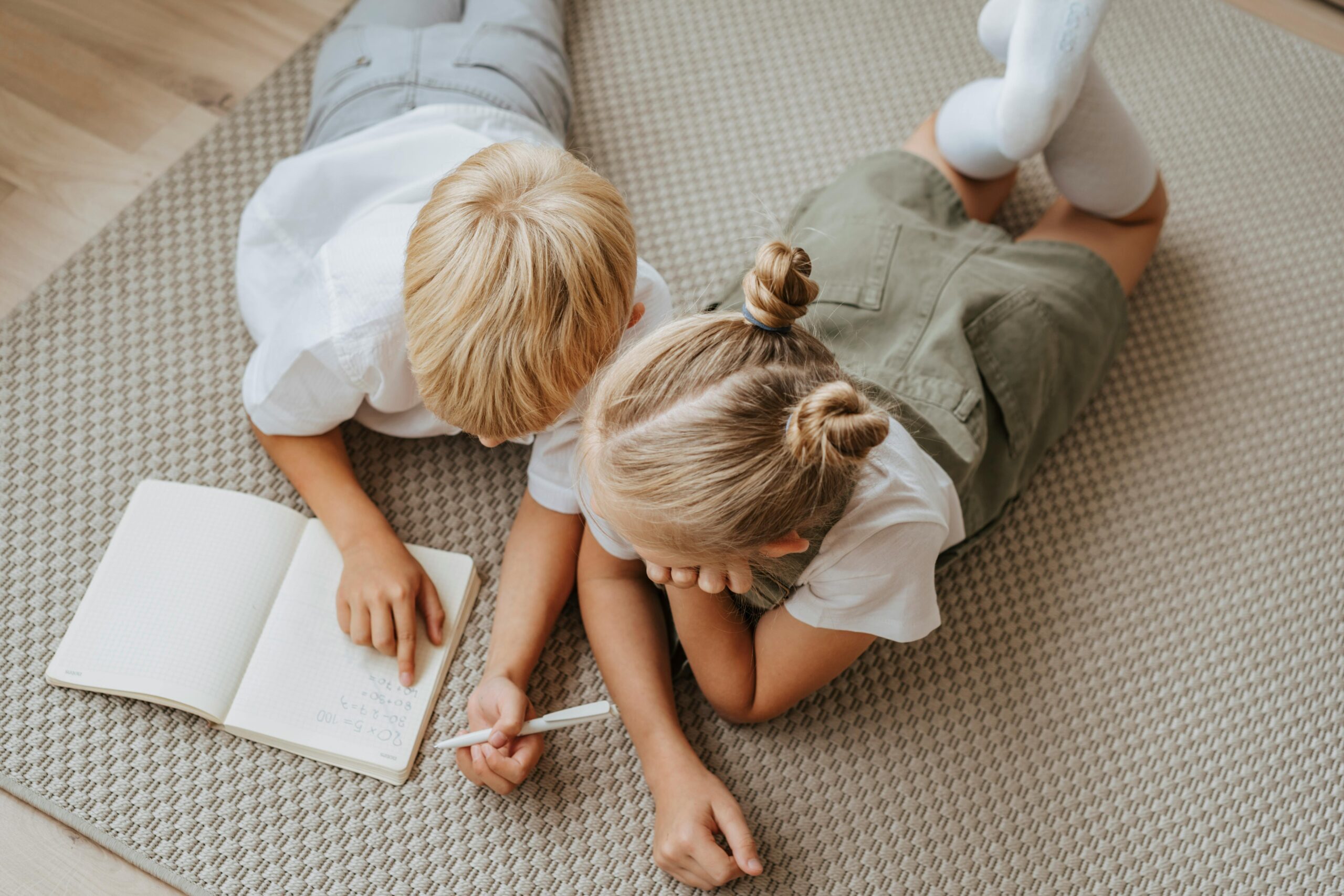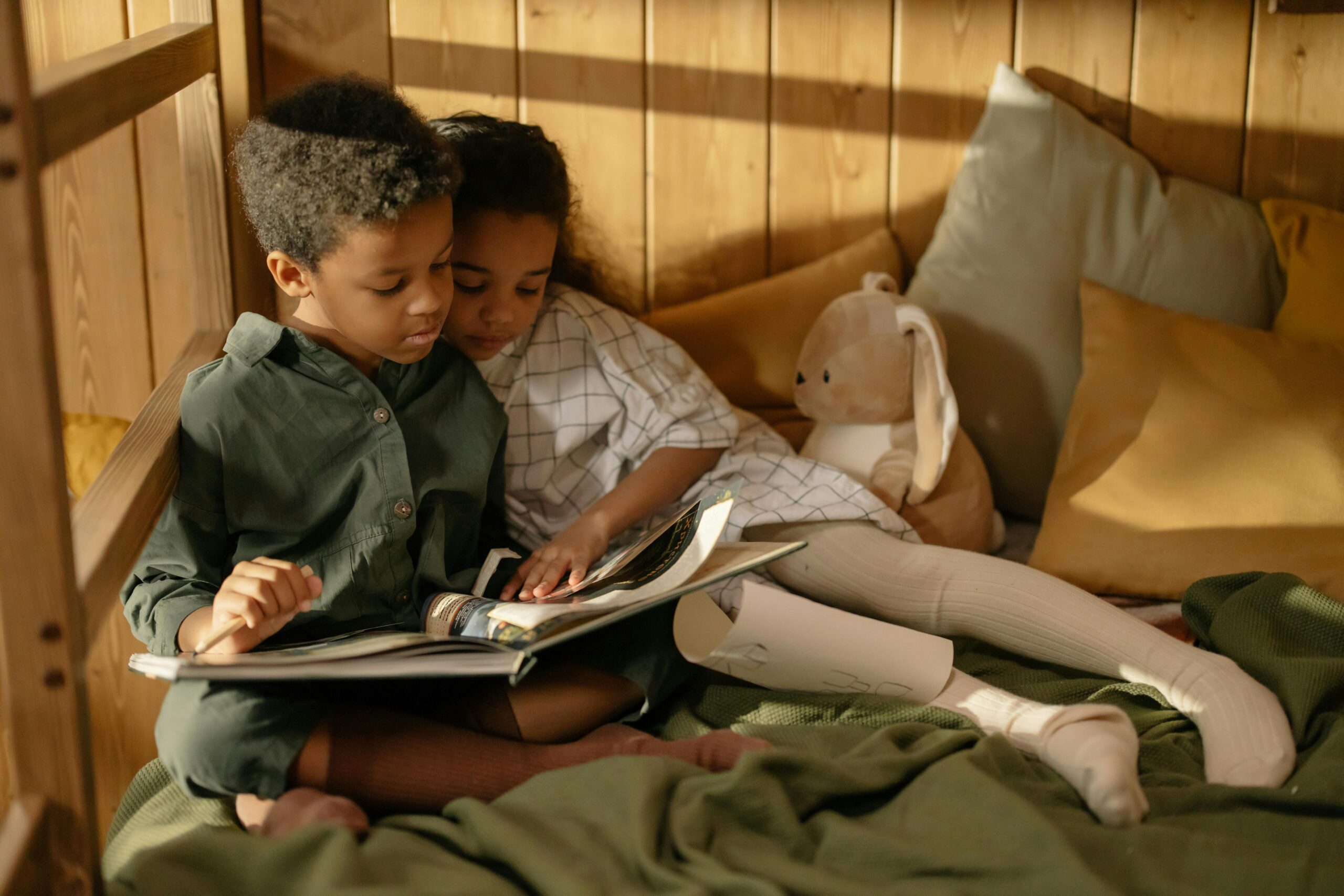In the heart of every family lies the intricate tapestry of sibling relationships, weaving together moments of joy, shared experiences, and the occasional sibling rivalry. At the Motherhood Center in Houston, Texas, we understand the profound impact that fostering positive connections between siblings can have on the overall well-being of a family.
For over two decades, Motherhood Center has been a haven for families, offering a wealth of resources catering to the unique needs of parents, infants, and young children. In our journey of nurturing family wellness, we recognize the vital role that sibling relationships play in shaping the foundation of a supportive and loving home.
In this guide, we delve into the intricacies of sibling dynamics and explore practical tips provided by the Motherhood Center experts on cultivating strong, affectionate bonds between your children. From effective communication strategies to creating an environment that encourages collaboration, join us on a journey toward fostering sibling relationships that stand the test of time. After all, at the Motherhood Center, building harmonious connections within the family is the cornerstone of a thriving and resilient community.
Understanding Sibling Dynamics
Navigating the intricacies of sibling dynamics is akin to deciphering a unique language spoken only within the confines of familial bonds. At the Motherhood Center, we recognize that birth order, age gaps, and individual personalities contribute to the complex tapestry of sibling relationships. Understanding these dynamics lays the foundation for fostering positive connections between siblings.
Birth Order and Influence
Birth order often plays a significant role in shaping the personalities and interactions of siblings. The eldest child, typically viewed as the trailblazer, might assume a leadership role, while younger siblings might adopt more rebellious or nurturing characteristics. Recognizing these tendencies allows parents to tailor their approach, understanding the individual needs of each child within the familial structure.
Age Gaps and Their Impact
Age gaps between siblings introduce a dynamic interplay of influence and mentorship. While larger age differences may result in distinct interests and developmental stages, smaller gaps can foster closer companionship. The key lies in acknowledging these differences and finding common ground that nurtures a shared understanding and mutual respect among siblings.
Recognizing Individual Personalities
Every child is unique, possessing their own set of interests, strengths, and challenges. At the Motherhood Center, we encourage parents to celebrate these differences and recognize the individuality of each sibling. By understanding and appreciating their distinct personalities, parents can tailor their parenting approach to meet the specific needs of each child, fostering a sense of autonomy and belonging within the family unit.
Effective Communication Strategies
In the symphony of family dynamics, effective communication serves as the conductor, orchestrating harmony and understanding among siblings. At the core of building positive relationships lies the ability to communicate openly and empathetically. This section explores invaluable strategies to cultivate communication skills and fortify the bonds between siblings.
Teaching Active Listening Skills
Active listening is a foundational pillar of effective communication. Encouraging children to truly hear and understand each other’s perspectives fosters a sense of validation and respect. Parents can instill this skill by modeling attentive listening and prompting children to articulate their feelings without interruption. At its essence, active listening forms the basis for genuine understanding and lays the groundwork for empathetic sibling relationships.
Encouraging Open and Honest Communication
Creating an environment where siblings feel safe expressing their thoughts and emotions is crucial for building trust. Parents can foster open communication by establishing a non-judgmental space where each child feels heard and understood. Encourage regular family meetings where everyone has an opportunity to share their experiences, creating a sense of unity and reinforcing the idea that every voice within the family matters.
Promoting Empathy and Understanding
Empathy is the glue that binds siblings together through the highs and lows of familial life. Parents play a pivotal role in nurturing empathy by helping children recognize and understand each other’s emotions. Encourage siblings to express empathy through both verbal and non-verbal cues, fostering a supportive environment where each child feels acknowledged and cared for. By instilling these values, parents lay the groundwork for lasting connections built on compassion and mutual understanding.
Creating a Positive Environment
Within the nurturing embrace of a positive environment, sibling relationships have fertile ground to flourish and strengthen. The atmosphere within a household significantly influences the dynamics between siblings, and at the core of a thriving connection lies a carefully crafted positive setting. This section explores the pivotal role of the environment in fostering sibling bonds and offers practical guidance on creating a space where love and cooperation can thrive.
Providing a Shared Space for Activities
A shared space dedicated to activities not only encourages bonding but also cultivates a sense of togetherness among siblings. Designate an area within the home where siblings can engage in collaborative play, arts and crafts, or shared hobbies. This fosters a sense of camaraderie as they create lasting memories together, strengthening their bond in a positive, shared space.
Encouraging Collaboration in Play and Learning
Promoting collaborative play and learning experiences sets the stage for siblings to see each other as allies rather than competitors. Engage them in activities that require teamwork, problem-solving, and creativity. Whether it’s building a fort, working on a puzzle, or embarking on a joint project, the shared effort cultivates a positive atmosphere and teaches valuable skills that extend beyond childhood.
Setting Clear Expectations for Behavior
A positive environment is one where expectations for behavior are communicated clearly and consistently. Establish family guidelines that emphasize respect, kindness, and cooperation. When siblings understand the expectations regarding their interactions, they are more likely to navigate conflicts with a positive mindset, contributing to an overall harmonious atmosphere within the household.
Building Individual Connections
Amidst the shared experiences and camaraderie of sibling life, it is equally vital for parents to recognize and nurture the individual connections they have with each child. Building individual connections fosters a sense of uniqueness and strengthens the bonds between siblings. In this section, we delve into the importance of these one-on-one relationships and provide practical insights for parents seeking to cultivate individual connections with their children.
Spending One-on-One Time with Each Child
Amidst the hustle of family life, carving out dedicated one-on-one time with each child is a powerful way to nurture individual connections. This intentional time allows parents to engage in activities tailored to the specific interests of each child, fostering a sense of importance and uniqueness. Whether it’s a shared hobby, a special outing, or a quiet conversation, these moments create lasting memories and reinforce the individual bond between parent and child.
Identifying and Nurturing Individual Interests
Every child possesses unique interests and passions. Recognizing and nurturing these individual pursuits is key to building strong connections. Encourage and support each child in exploring their hobbies, whether it’s art, sports, or academic pursuits. By taking an interest in their passions, parents not only foster a sense of validation but also create opportunities for shared experiences that contribute to a deeper understanding between siblings.
Celebrating Each Child’s Achievements and Milestones
In a family with multiple siblings, celebrating individual achievements becomes a cornerstone of building connections. Acknowledge and celebrate each child’s milestones, whether big or small. By actively participating in their successes, parents demonstrate their unwavering support and reinforce the idea that each child is valued for their unique contributions, fostering a positive and affirming environment within the family.
Conflict Resolution Techniques
In the tapestry of sibling relationships, conflicts are inevitable, yet they present opportunities for growth, understanding, and strengthened bonds. This section delves into effective conflict resolution techniques that empower parents to guide their children through disagreements constructively and positively, fostering resilience and harmony within the sibling dynamic.
Teaching Problem-Solving Skills
Equipping children with problem-solving skills is fundamental to resolving conflicts amicably. Encourage them to identify the root of the issue, express their feelings, and brainstorm solutions together. This process not only addresses the immediate conflict but also instills valuable skills that will serve them well throughout their lives, promoting a sense of autonomy and cooperation.
Implementing a “Cooling-Off” Period
In the heat of a disagreement, emotions can run high. Introducing a “cooling-off” period provides siblings with a chance to step away, collect their thoughts, and reflect on the situation. This technique encourages self-regulation and prevents impulsive reactions, creating space for a more composed and constructive resolution when they come back to the discussion.
Encouraging Compromise and Negotiation
Teaching siblings the art of compromise and negotiation is a cornerstone of conflict resolution. Emphasize the importance of finding a middle ground where both parties feel heard and valued. This collaborative approach not only resolves immediate conflicts but also nurtures a spirit of cooperation, fostering an environment where siblings learn to navigate differences with empathy and understanding.
Sibling Bonding Activities
The fabric of sibling relationships is woven through shared experiences, and engaging in purposeful bonding strengthens the threads of connection. In this section, we explore a variety of sibling bonding activities that foster camaraderie and create lasting memories, contributing to the foundation of a robust and affectionate sibling relationship.
Suggesting Age-Appropriate Activities for Bonding
Tailoring bonding activities to suit the age and interests of each sibling ensures that everyone can actively participate and enjoy the experience. From simple games and crafts for younger children to more complex projects and outings for older siblings, suggesting age-appropriate activities ensures that bonding moments are enjoyable and accessible to all.
Family Outings and Traditions
Incorporating family outings and traditions into the fabric of sibling life creates a sense of continuity and shared history. Whether it’s a regular family movie night, a weekend hike, or holiday traditions, these shared experiences contribute to a sense of unity. Traditions, in particular, create a tapestry of memories that siblings can revisit throughout their lives, fostering a deep and enduring connection.
Group Games and Collaborative Projects
Encouraging siblings to engage in group games and collaborative projects not only promotes teamwork but also strengthens their bond through shared accomplishments. From board games and sports activities to working together on a family project, these experiences instill a sense of collaboration and mutual support, laying the groundwork for a cooperative and resilient sibling dynamic.
Modeling Positive Behavior
In the intricate dance of family life, parents serve as the primary architects shaping the behavior and dynamics within the household. This section delves into the pivotal role of modeling positive behavior as a cornerstone for fostering a healthy and supportive sibling relationship. By embodying positive values and interactions, parents create a blueprint that guides siblings toward forming lasting connections built on respect and mutual understanding.
Being a Positive Role Model for Sibling Relationships
Children are keen observers, and parents, as role models, set the tone for how siblings interact. Demonstrating respect, empathy, and effective communication within the parent-child relationship serves as a powerful example for siblings to emulate. By consistently modeling positive behavior, parents provide a template for constructive interactions, shaping the way siblings navigate their relationships with each other.
Demonstrating Conflict Resolution and Compromise
Conflict is a natural part of any relationship, and how parents handle disagreements becomes a lesson for siblings in conflict resolution. By openly demonstrating healthy conflict resolution techniques and a willingness to compromise when needed, parents equip their children with valuable skills that contribute to a positive and harmonious sibling dynamic.
Expressing Love and Support Openly
Verbal and non-verbal expressions of love and support create a nurturing environment that bolsters sibling relationships. Parents can actively demonstrate the importance of expressing affection, appreciation, and encouragement within the family. This strengthens the parent-child bond and sets the stage for siblings to openly communicate their feelings and reinforce their connection through positive affirmations.
Involving Professionals
Navigating the complexities of sibling relationships may sometimes warrant seeking guidance from professionals specializing in family dynamics. In this section, we explore the potential benefits of involving professionals, such as attending parenting classes or workshops and, when necessary, considering family counseling. These resources can provide valuable insights and strategies to address specific challenges and strengthen the familial bonds between siblings.
Seeking Guidance from Parenting Classes or Workshops
Embarking on the perpetual journey of parenthood involves constant growth and learning. At Motherhood Center, our parenting classes extend a guiding hand, providing invaluable insights into various aspects of child development, effective communication, and conflict resolution. While these classes aren’t specifically tailored to sibling relationships, they equip parents with practical tools and strategies that seamlessly apply to fostering positive dynamics among siblings. By actively engaging in these educational opportunities at Motherhood Center, parents enrich their parenting toolkit, creating a supportive environment that extends beyond individual relationships to enhance the overall family dynamic.
Considering Family Counseling if Needed
In situations where sibling conflicts persist or become more challenging, seeking the assistance of family counseling can be a transformative step. Family counselors are trained to address communication breakdowns, identify underlying issues, and guide families toward solutions. Professional intervention can provide a safe space for siblings to express their feelings and concerns, fostering a deeper understanding and promoting healthier relationships within the family unit.
Utilizing Resources Like Parenting Books or Online Support Groups
The wealth of parenting resources available, including books and online support groups, can be valuable tools for parents seeking additional guidance. Parenting books often provide in-depth insights into specific challenges, while online support groups create a community where parents can share experiences and learn from one another. These resources offer a supportive network that can be instrumental in navigating the unique dynamics of sibling relationships.
Conclusion
In the intricate tapestry of family life, fostering positive sibling relationships emerges as a cornerstone for building a harmonious and supportive home environment. From understanding sibling dynamics to implementing effective communication strategies, creating a positive environment, and engaging in purposeful bonding activities, each aspect contributes to the resilience and strength of these lifelong connections.
As we conclude this exploration into nurturing sibling bonds, we invite you to take a proactive step toward building a thriving family dynamic. At Motherhood Center in Houston, Texas, we stand ready to support you on this journey. Our comprehensive resources, including childcare services, expert doula assistance, and parenting classes, provide the tools and guidance needed to navigate the intricacies of family life.
Contact Motherhood Center today and unlock a wealth of resources to enrich your parenting experience. From prenatal and parenting education to personalized doula services, we are committed to being your partner in creating a loving and supportive environment for your growing family. Embrace the possibilities of harmonious sibling relationships, and let Motherhood Center be your trusted companion on this fulfilling journey of parenthood.
FAQs
How can I address constant bickering between my children?
Addressing constant bickering involves teaching conflict resolution skills. Encourage open communication, active listening, and finding compromises. Consider involving them in joint activities to strengthen their bond and minimize conflicts.
Is it normal for siblings to have different interests?
Yes, it’s completely normal for siblings to have diverse interests. Each child is unique, and celebrating individual passions fosters a sense of autonomy. Encourage a supportive environment where diverse interests are acknowledged and respected.
What can I do if one child feels neglected compared to the other?
Allocate dedicated one-on-one time with each child to address feelings of neglect. Engage in activities tailored to their interests and express your love and appreciation consistently. Balancing attention ensures each child feels valued.
Are there specific strategies for handling sibling rivalry in toddlers?
Toddlers often struggle with sharing and expressing emotions. Introduce simple language for emotions, teach basic problem-solving, and closely supervise interactions. Offer positive reinforcement for cooperative behavior to encourage a harmonious atmosphere.
When should I seek professional help for sibling conflicts?
If sibling conflicts persist, intensify, or significantly impact family dynamics, seeking professional help is advisable. Family counseling or parenting classes can provide valuable guidance in understanding and resolving underlying issues.







